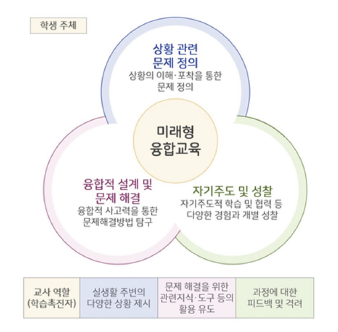Abstract
In this study, the current status of implementation of STEAM education was investigated, and the perception of future STEAM education was investigated. A survey was conducted for teachers of the STEAM Teacher Research Group, and frequency analysis and word cloud keyword analysis were performed on the response data. The key findings are as follows. With respect to current status of implementation of STEAM education, first, the reason for implementing STEAM education was teachers' voluntary efforts and the necessity for future talent cultivation for all elementary, middle and high school teachers. Second, the difficulties in implementing STEAM education are heavy workload, adjustment of class hours, difficulties in securing budget, and lack of understanding of STEAM education for elementary schools. For middle schools, the answers are difficulties in curriculum restructuring and collaborating with other teachers, and the lack of program dissemination, while high schools responded to the lack of curriculum reorganization, administrators' understanding and educational expectations. Third, as a learning method for STEAM classes, the student participation type in which students directly solve problems was mainly used, and the student-led type emphasized in future STEAM education was already applied. Regarding the perception of future STEAM education, first, they were well aware of the main contents of future STEAM education, such as nurturing future talent, chemical fusion, student-led, real-life problem solving, and sympathized with the necessity. Second, difficulties related to the implementation of future STEAM education were teacher competency, teacher understanding, culture creation, and realistic burden. Finally, by synthesizing these opinions, the goals for revitalizing future STEAM education are summarized as strengthening teachers' professionalism, forming a consensus, and creating an environment inside and outside the school. As a specific way to achieve this, professional support for teachers, research and self-development, change of perception, administrative and financial support, and institutional support were suggested.
Figures & Tables

Fig. 1. Components of future STEAM education(Source: Lee et al., 2022)


